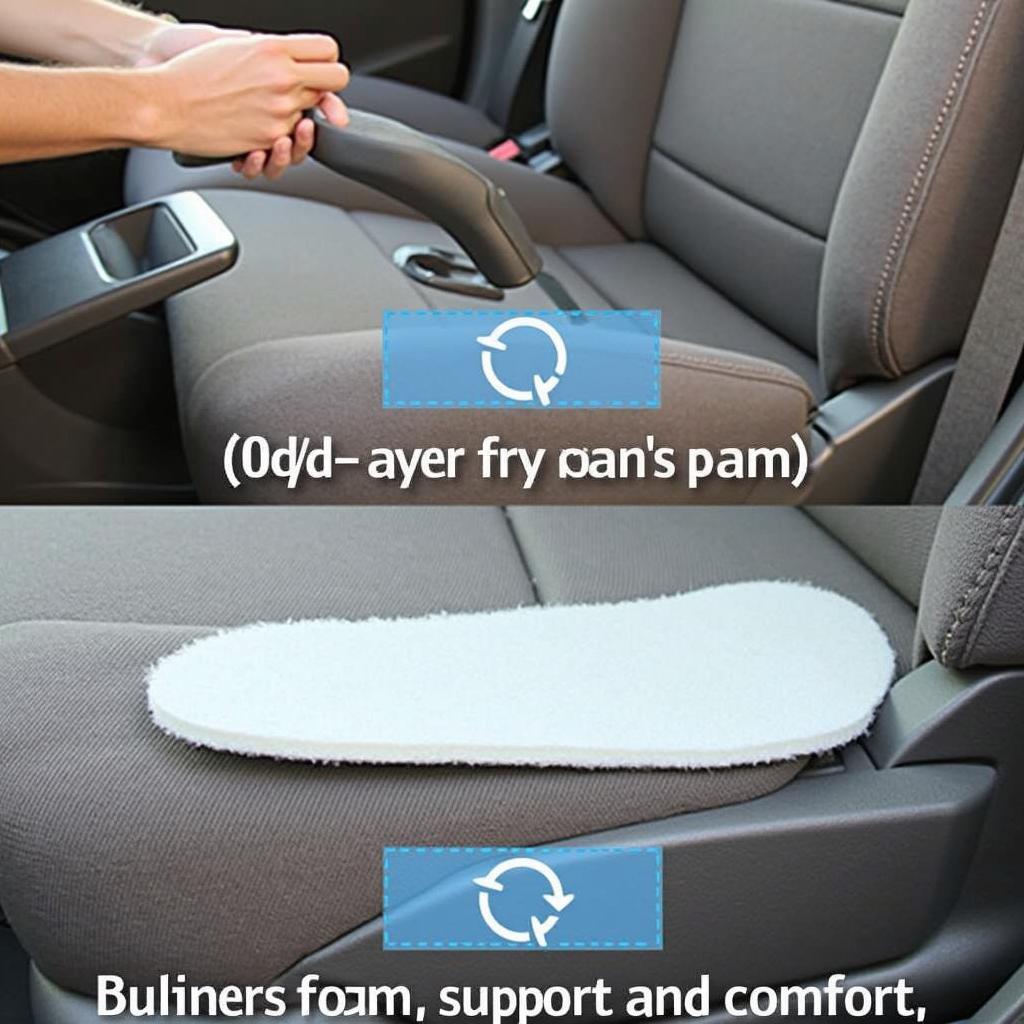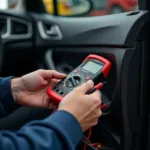Car seat cushions endure a lot of wear and tear, leading to discomfort and a less enjoyable driving experience. Whether you’re dealing with sagging, tears, or worn-out padding, knowing how to repair car seat cushions can save you money and extend the life of your car’s interior. This comprehensive guide will walk you through the steps, tips, and expert advice to tackle those car seat cushion repairs like a pro.
Identifying the Problem: What’s Ailing Your Car Seat Cushion?
Before diving into repairs, it’s crucial to pinpoint the root of the issue.
- Sagging: Over time, the foam inside your car seat cushion can lose its resilience, leading to uncomfortable dips and a less supportive seat.
- Tears and Rips: Fabric car seats are prone to tears, especially along the seams or from sharp objects.
- Worn-Out Padding: If you feel springs or a hard surface beneath the fabric, it’s likely the padding has deteriorated and needs replacement.
Gathering Your Tools and Materials
Having the right tools on hand will make your car seat cushion repair project smoother. Here’s a list to get you started:
- Upholstery Removal Tools: These specialized tools help safely remove clips, fasteners, and hog rings holding the upholstery in place.
- Sharp Scissors or Utility Knife: Essential for cutting foam and fabric.
- Replacement Foam: Choose high-density foam for durability and comfort.
- Upholstery Fabric: If your fabric is damaged, select a durable and breathable replacement that matches your car’s interior.
- Upholstery Needle and Thread: Opt for heavy-duty thread designed for upholstery work.
- Hog Ring Pliers (if applicable): For securing hog rings.
- Sewing Machine (optional): Can be helpful for larger repairs.
How to Repair Car Seat Cushion Sagging: Restoring Support and Comfort
-
Access the Foam: Carefully remove the car seat cushion from the vehicle. Depending on your car model, this may involve unbolting the seat or releasing latches. Then, using upholstery removal tools, detach the upholstery from the cushion, exposing the foam underneath.
-
Assess the Foam: Examine the foam for signs of compression or damage. If it’s simply compressed, consider adding a layer of high-density foam on top to restore loft and support.
 Adding Foam to Car Seat Cushion
Adding Foam to Car Seat Cushion
- Secure the New Foam (if applicable): If adding a foam layer, use upholstery adhesive to bond it securely to the existing foam.
“When selecting replacement foam, prioritize high-density options for long-lasting comfort and support,” advises John Miller, a seasoned automotive upholsterer with over 20 years of experience. “Low-density foam will compress quickly, leading to a repeat of the sagging issue.”
- Reinstall Upholstery: Carefully stretch the upholstery back over the cushion, ensuring a snug fit. Reattach it using hog rings or the original fasteners.
Can Car Seat Padding Be Repaired? Addressing Tears and Damage
can car seat padding be repaired focuses on providing solutions for addressing tears, rips, and damage to your car seat padding, ensuring a comfortable and visually appealing interior.
How to Repair a Tear in Fabric Car Seat
how to repair a tear in fabric car seat provides a step-by-step guide on effectively mending tears in your fabric car seat, restoring its appearance and preventing further damage.
Conclusion: Revitalized Car Seat Cushions for Enhanced Comfort
Repairing your car seat cushion is an achievable DIY project that can significantly improve your driving experience. By following the steps outlined in this guide, you can address common issues like sagging, tears, and worn-out padding, restoring comfort and extending the life of your car’s interior. Remember to use high-quality materials and take your time for the best results.


